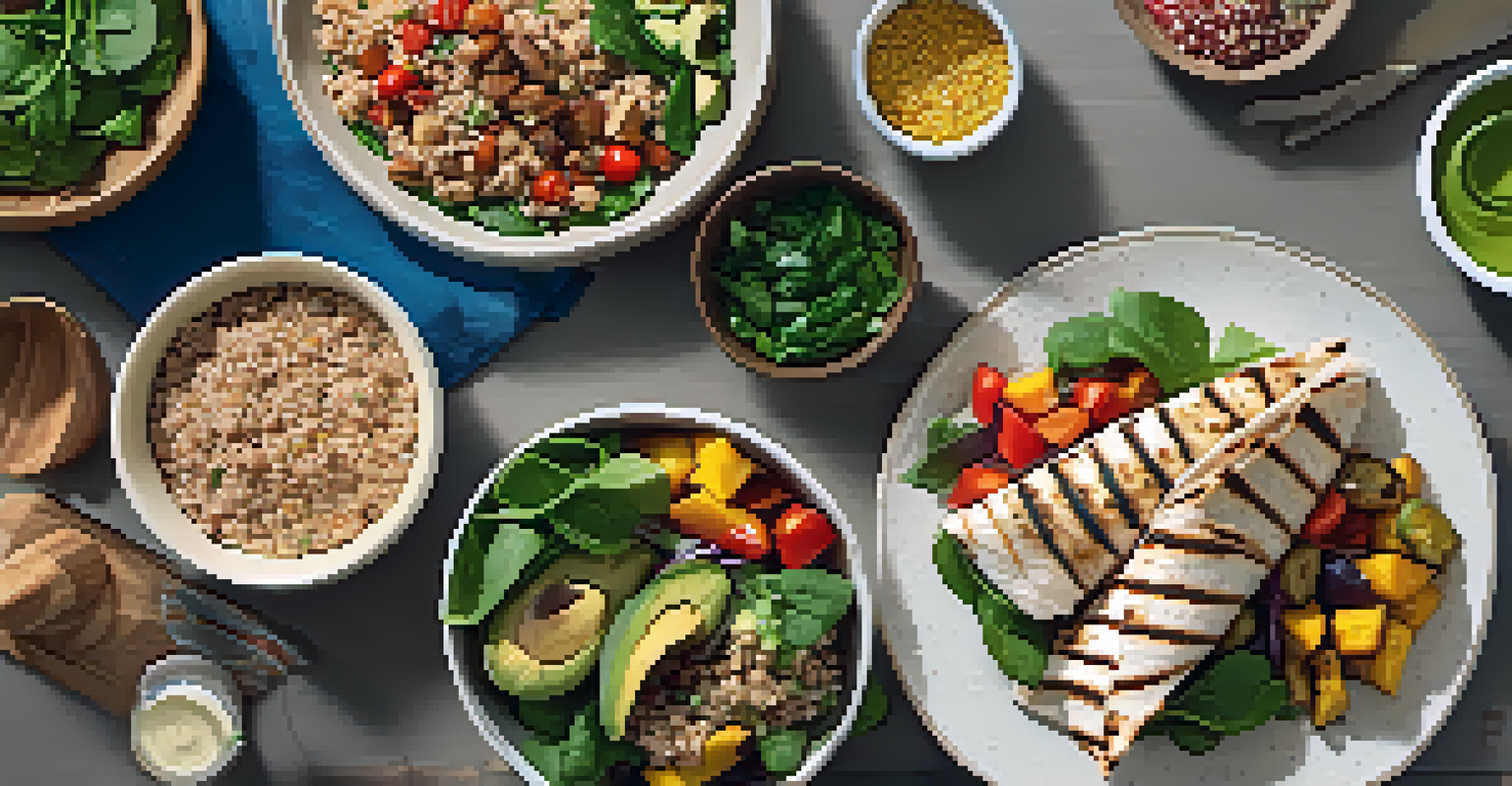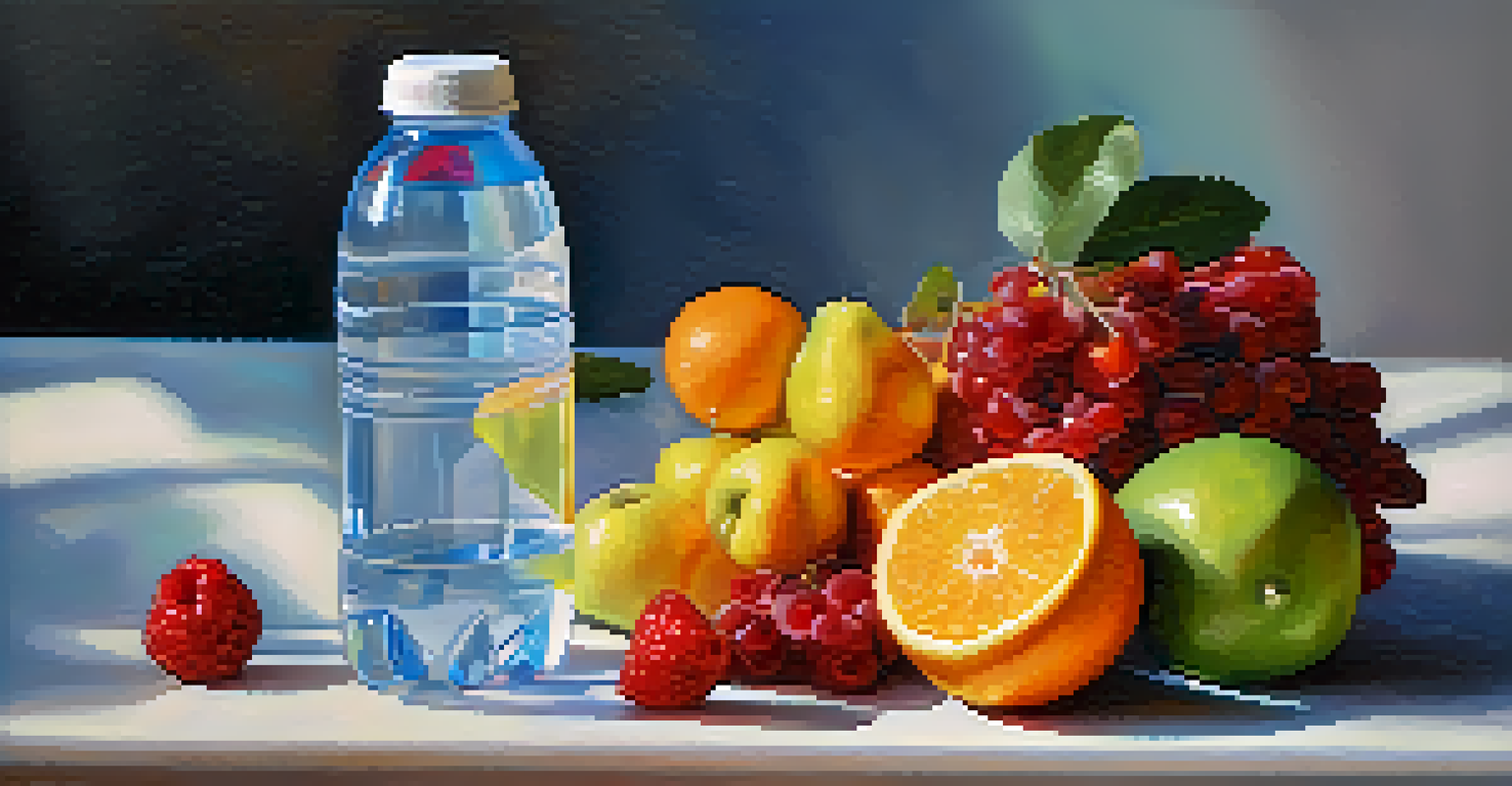Post-Workout Nutrition: Recovery Tips for Dancers

Why Post-Workout Nutrition Matters for Dancers
After an intense dance session, your body is in need of replenishment. Just like a car runs out of fuel, your muscles require nutrients to recover effectively. This is where post-workout nutrition plays a crucial role in aiding recovery, reducing soreness, and enhancing your overall performance.
Take care of your body. It's the only place you have to live.
Dancers rely heavily on their physicality, and without proper nutrition, they risk fatigue and potential injury. Think of your body as a finely tuned instrument: if you don’t maintain it, its performance will falter. By focusing on what you consume after dancing, you can ensure your body is ready for the next challenge.
Additionally, the right nutrition can help restore glycogen levels and repair muscle tissue. This is particularly important for dancers, who often push their bodies to the limit. So, understanding the importance of post-workout nutrition can be a game changer in your dance journey.
Key Nutrients for Effective Recovery
When it comes to post-workout nutrition, two key nutrients stand out: carbohydrates and protein. Carbohydrates help replenish the energy stores you’ve depleted during your dance session, while protein is essential for repairing and building muscle. Think of carbs as the fuel and protein as the bricks used to rebuild the muscle structures.

Incorporating a balanced combination of these nutrients is vital. For instance, a simple smoothie made with banana, yogurt, and a scoop of protein powder can provide the perfect mix. Not only is it delicious, but it also sets your body up for success as it recovers from the demands of dance.
Importance of Post-Workout Nutrition
Post-workout nutrition is crucial for recovery, reducing soreness, and enhancing performance for dancers.
Don’t forget about hydration, either! Water plays an integral role in nutrient transport and maintaining optimal body function. So, along with your post-workout meal or snack, be sure to hydrate to support your recovery process.
Timing Your Post-Workout Meal: The 30-Minute Rule
Timing is everything, especially when it comes to post-workout nutrition. Ideally, you should aim to eat within 30 minutes after your dance session. This is often referred to as the 'anabolic window,' a period when your muscles are particularly receptive to nutrients.
Nutrition is not just about eating. It's about learning to live.
During this time, your body is primed to absorb the food you consume, maximizing recovery benefits. Think of it like watering a plant right after it's been exposed to the sun; it’s more effective when done at the right moment. Skipping this window might mean missing out on valuable recovery time.
If you can't sit down for a full meal right away, consider a quick snack that combines both carbs and protein. A piece of fruit with nut butter or a protein bar can work wonders to kickstart your recovery and keep you on track for your next dance class.
Hydration: The Unsung Hero of Recovery
While food is important, hydration is often overlooked in the recovery equation. Water is essential for maintaining energy levels, regulating temperature, and aiding digestion. After dancing, you lose fluids through sweat, and replenishing those fluids should be a top priority.
Aim to drink water right after your session, and consider incorporating electrolyte-rich beverages if your dance routine is particularly strenuous. This can help replace lost minerals and keep your body functioning optimally. Think of hydration as the oil that keeps your engine running smoothly.
Key Nutrients: Carbs and Protein
Carbohydrates replenish energy stores while protein repairs muscle, making them essential for effective recovery.
To ensure you stay hydrated, keep a water bottle handy during practice and make it a habit to drink regularly. Remember, your body works best when it’s well-hydrated, so don’t underestimate the power of water in your recovery process.
Sample Post-Workout Meals for Dancers
Creating a post-workout meal can be simple and enjoyable. For example, a whole grain wrap with turkey, spinach, and avocado provides a balance of protein, healthy fats, and carbohydrates. This combo not only fuels your recovery but also satisfies your taste buds.
Another great option is a quinoa bowl topped with grilled chicken and roasted vegetables. Quinoa packs a protein punch while also offering essential amino acids, making it a fantastic choice for muscle recovery. Plus, it’s versatile and can be customized to your liking!
You might also explore quick shakes or smoothies, like blending spinach, banana, protein powder, and almond milk. These can be prepared in advance and are perfect for busy dancers who need something nutritious on the go.
The Role of Supplements in Recovery
While whole foods should be your primary source of nutrients, sometimes supplements can be beneficial. Protein powders, for instance, are an easy way to ensure you are getting enough protein post-workout. They can be added to smoothies or consumed as shakes to support muscle repair.
Additionally, consider omega-3 fatty acids, which can help reduce inflammation and soreness after intense dance sessions. Fish oil supplements are a popular choice, but you can also find omega-3s in flaxseeds and walnuts. Think of supplements as the extra boost that complements your diet.
Hydration Supports Recovery
Staying hydrated is vital for maintaining energy levels and proper body function after intense dance sessions.
However, it’s essential to approach supplements with caution. Always consult with a healthcare professional or a registered dietitian to discuss what might be appropriate for your individual needs. Remember, they should enhance your nutrition, not replace it.
Listening to Your Body: Personalizing Your Nutrition
Every dancer's body is unique, and so are their nutritional needs. Listening to your body and tuning in to how different foods make you feel can help you personalize your post-workout nutrition. This might take some experimentation, but it's worth the effort.
Pay attention to your energy levels, recovery time, and how you feel during the next dance session. Keeping a journal can help track what you eat and how it affects your performance. It’s like having a roadmap that guides you towards better health and recovery.

Ultimately, finding what works best for you is key. Some dancers may thrive on higher carbs, while others may find more balance with a mix of protein and fats. Trust your instincts and adjust your nutrition plan until it feels just right for you.